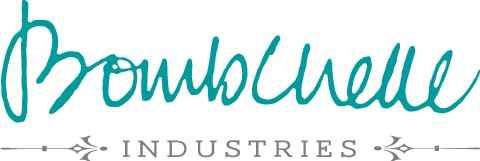For the first guest post ever at Let’s Radiate, I wanted something awesome. So when Melissa offered to write a guest post for me – you know I said yes! Without further ado, I’ll let her take it away…
Here’s a conundrum: I’m an artist in many disciplines, but left to my own devices, sometimes days, weeks, even months or years will go by without my doing the very passions that make me happiest!
In the past year, however, I’ve been more productive and prolific than in the previous decade.
My secret?
Accountability
It’s truly amazing what happens when you’re held accountable for something. One of my mantras has always been, “In my world, if it doesn’t have a deadline, it doesn’t get done.” And indeed, anything that I have to do for a client gets done, no questions asked.
But the “just for me” stuff? Since it rarely comes with built-in deadlines, I’ve had to figure out how to create my own.
Here are 7 ways to build accountability into your life that have worked for me:
1) Take a class
Classes can be fun, of course, and great for learning new things. But in addition to that, fear of looking like a fool can be a powerful motivator. When I started playing guitar, I spent the first few months learning from a book and tape set. When I finally signed up for a guitar class I found myself practicing much more consistently. After all, I had just a week to get up to speed on the two songs we learned last week, and I didn’t want to be the “worst” one in the class!
2) Create a recurring deadline (ideally with a feedback loop)
One way that I keep myself making art is with my not-quite-daily ArtSpark newsletter, which sends out a new piece of art (almost) every weekday. Though I left myself an “out” by naming it the “not-quite-daily ArtSpark,” in fact, I’ve never missed a day. I know my subscribers expect their weekday “hit” of art, and the emails I get from them energize me to keep me playing in my studio!
3) Get an accountability partner
My friends, M and S, have a pact that they will meet at the gym every morning. Part of the deal is that, if either one is not going to make it, she will NOT let the other one know. M has even started calling S when she’s on her way to the gym. Knowing the other partner is waiting for her gets them both out of bed.
You can do the same thing with anything that’s important to you. A scheduled phone call can be a great pre-studio-time check-in. If you know your partner is about to spend an hour working in her studio, you’re much more likely to actually get to work in yours!
4) Create a mastermind group
A mastermind group is basically a whole group of accountability partners, all keeping each other accountable, helping brainstorm, offering support and advice where needed. It can be focused on a particular theme, and the guidelines are up to the particular group members. I’ve been in a few mastermind groups, and they can be fantastic for accountability.
However, be advised that informal masterminds started by friends do have a tendency to dissolve into chat sessions. Remember, to be effective, a mastermind group needs to stay focused on the goal of helping each other be productive!
Which leads me to…
5) Join a paid mastermind group
I run group coaching masterminds for small groups of creatives, and it never ceases to amaze me how much progress the members make in the weeks we spend together. Investing money into something has a way of making you take it more seriously, and more than once a new member has said that clicking the “buy” button in itself started a shift in energy.
Frequently the knowledge that they’re going to have to report back on their commitments is the only thing that gets members to push past their Resistance and get to work. And that’s exactly the beauty of accountability!
6) Hire a coach
My own life coach has done wonders for my productivity. I’m a coach myself, and though I prefer the title “Inspirationalist,” the fact is that regardless of the title, what I do is a lot like what a sports coach does for an athlete. There’s a certain amount of “head game” involved – figuring out what motivates a client, for example – plus encouragement and cheering-on. But one of the most powerful things a client gets from a coach is simply someone to hold you accountable.
7) Get a job
Okay, this one may sound counter-intuitive, but when I was offered a volunteer job as a receptionist at my yoga studio two half-hours a week in exchange for classes, I jumped at the opportunity! My initial impetus was to save money on the expensive classes. However, I’ve found the even bigger value to be the fact that I have to be at the studio, so I’m guaranteed to get to at least 2 classes a week, whereas if I paid for classes, I might never show up! (My un-used gym membership is proof of that!)
—
These are just 7 tips that have worked for me. Have you tried any of these accountability tricks? How have they worked for you? Do you have any others to add? Share them in the comments so we can all benefit!
Melissa Dinwiddie is an artist & inspirationalist, whose super-power is getting YOU sparked, stoked and creating. She writes about creative abundance and following your Bliss(es) at her blog, Living A Creative Life. On September 6, 8 and 13, Melissa and Cory Huff of TheAbundantArtist.com will be hosting three free, open calls for anyone wanting to thrive and live abundantly with and from their art. Let’s change the conversation about art and business, and bust the “starving artist” mindset! Click here to register.

